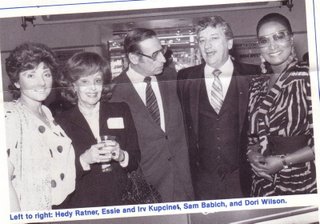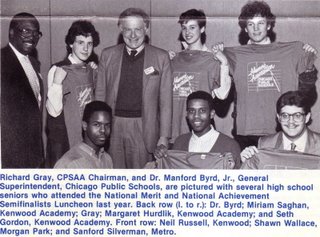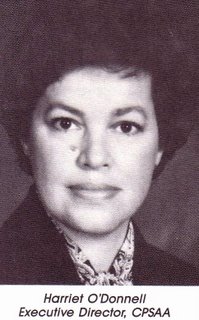
In 1983, when I was communications director for Chicago Public Schools’ Superintendent Ruth Love, and when support for the schools sagged, I conceived the idea of a citywide alumni association that would involve local politicians, civic leaders, business executives, and everyday citizens who would inspire students, raise money for the schools, and improve the image of public education. Thus, the Chicago Public Schools Alumni Association (CPSAA) was born, lived briefly, then died.

I got to thinking about the CPSAA last week when stories of First Day of School dominated daily news. Also, my memoir, “The Division Street Princess” reveals the impact of Lafayette Grammar School; and this Saturday night, Sept. 16, my Roosevelt High School Class of ’56 will celebrate our 50-year reunion. So public schools have been top of mind.
When I hatched the CPSAA in 1983, the media, parents, and school reformers were bashing the system; but I had a different view. After all, my two daughters, Faith and Jill, were college-bound Lane Tech graduates; and in my CPS job, I saw many outstanding teachers and students.
I pitched my idea to pals – who were also products of public schools -- and they enthusiastically climbed aboard agreeing to be part of a steering committee. For her part, Supt. Love, recognizing a PR opportunity, as well as a potent group of allies, gave her blessing.

Despite Dr. Love’s support, I wanted the CPSAA to be independent of the School Board because I believe this would provide greater credibility. And I wanted membership to be citywide – an alumni association that didn’t differentiate between North-, South-, or West- side schools. In the end, I believe my two stubborn and naïve visions aided the organization’s downfall.

The CPSAA quickly grew from a steering committee to a prestigious 31-member Board of Directors headed by Richard Gray, Allen M. Turner, and Daniel Levin. Other prominent names included Judge Seymour Simon, Sen. Carol Moseley Braun, Judge David Cerda, Allison Davis, Leon Despres, Hedy Ratner, William Singer, Dori Wilson, and Joel Zemans. We also added a 43-member Advisory Board with equally stellar names, and a 17-member Honorary Board of Directors that led with Congressman Frank Annunzio, included Mayor Harold Washington, and ended with Congressman Sydney R. Yates.

Once established, we published a quarterly newsletter that included descriptions of exemplary schools and programs, interviews with education reporters like Linda Lenz and Casey Banas, and messages from school leadership; hosted luncheons to honor National Merit and National Achievement scholarship finalists; sponsored special events for alumni -- like the April 10, 1987 basketball match between DuSable and Roosevelt high schools’ champs of the 1950s; and explored ways to build membership and achieve goals.


But as the CPSAA grew, I began to sink. A year after launching the organization, I had left the school system for a PR job with Jasculca/Terman, a public affairs firm, and no longer had time or energy to handle tasks. (This was before speedy computers and Internet access could have eased the load.) So in 1987 the association hired Harriet O’Donnell to be its first salaried executive director. Under her leadership, and in offices generously donated by a board member, O’Donnell moved the CPSAA forward.

By now, Manford Byrd, Jr. had succeeded Ruth Love as School Superintendent, and Michael Rotman took over from Richard Gray as Chairman of the CPSAA Board. Under a committee headed by Theodore H. Wright, the group launched a drive to build membership to 5,000; and O’Donnell added a mentor program, “anti dropout” public service announcements, student talent shows, a recognition ceremony for outstanding students, and other activities. She also acknowledged alumni’s pull to their old schools by organizing workshops to help establish individual associations.
But despite O’Donnell’s deep commitment and vision, as well as ongoing financial support from some members of the Board of Directors, plus a Chicago Community Trust grant, the CPSAA was never able to gain enough members or funding to sustain itself long term. O’Donnell kept the organization going for several years, but eventually closed its doors. (Sadly, O’Donnell died in 2003, leaving behind a legacy of exceptional good works for dozens of organizations.)
Today I wonder: If the CPSAA had been an official Chicago Public Schools program, could it have survived? And what could we have done to keep alumni enthusiastic about a citywide group, while still encouraging their loyalty to alma maters?
Now, 23 years after our starry eyed photo in the Chicago Tribune spelling out our title, the school system -- under the leadership of CEO Arne Duncan and the watchful eye of Mayor Daley -- is praised and emulated. Yes, critics remain, but parents do send their kids to city schools and vie for spots in gifted and classical schools, and scholastic academies. As further evidence of the changed climate, Dennis Rodkin and Amy Rainey, writing in the October issue of Chicago magazine, recognized 30 Chicago public schools in their list of 140 city and suburban winners.
Despite the CPSAA’s failure to survive, it did produce a major achievement: it proved that a diverse group of people – some powerful, some everyday folk – could band together to help a struggling school system. So hooray for our old schools, and hooray especially for public school alumni everywhere.
Postscript: Good news for “The Division Street Princess:” The instructional coordinator of William P. Gray Elementary School, at 3730 N. Laramie, on Chicago’s Northwest side, has ordered a set of the books for 8th grade Language Arts teachers to use in their classrooms. This confirms my view that my memoir, although written for adults, can also appeal to young readers. In fact, “The Division Street Princess” is in the running for an ALEX award, which the American Library Association bestows on 10 books written for adults that have special appeal to young adults, ages 12 through 18.
1 comment:
Thanks for the memories, Elaine. ... As for the photos, that's how I picture everyone still!
Post a Comment